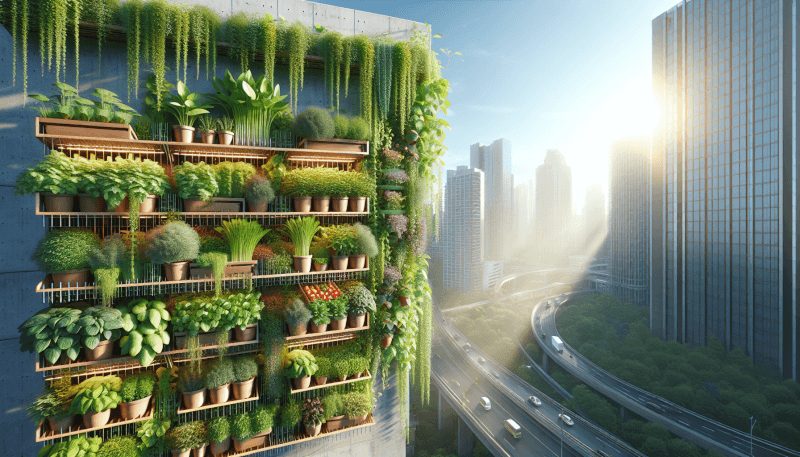Imagine having a small balcony or a corner in your backyard that you can transform into your own personal garden. With limited space, it may seem challenging to grow your own ingredients, but fear not! In this article, you will discover clever tips and tricks to maximize every inch of your limited space for growing your own fresh and flavorful ingredients. From vertical gardening to using compact containers, get ready to unleash your inner green thumb and create a bountiful garden that will impress even in the smallest of spaces. Let’s dive in and explore the world of compact gardening together!
Container Gardening
Container gardening is a fantastic solution for those with limited space who still want to enjoy the benefits of growing their own ingredients. By carefully choosing the right containers, optimizing vertical space, and utilizing hanging baskets and vertical gardening systems, you can create a thriving garden even in the smallest of spaces.
Choosing the Right Containers
When it comes to container gardening, choosing the right containers is essential. Opt for containers that are the appropriate size for the plants you intend to grow. Make sure they have proper drainage holes to allow excess water to escape, preventing root rot. Additionally, consider using containers made from materials such as ceramic, plastic, or fabric, as they are lightweight, durable, and offer good insulation for the plant roots.
Optimizing Vertical Space
One of the keys to maximizing your growing area is to make use of vertical space. By utilizing trellises, fences, or other structures, you can train climbing plants to grow upwards, freeing up valuable ground space for additional plantings. Vertical gardening allows you to grow more in the same area while creating a beautiful green wall.
Utilizing Hanging Baskets
Hanging baskets are a great way to add visual interest and maximize space in a small garden. Choose hanging baskets that are sturdy and provide proper drainage. They can be easily hung from hooks, fences, or even balcony railings to add a touch of green to any space. Consider growing cascading plants such as strawberries or trailing flowers to make the most of your hanging baskets.
Vertical Gardening Systems
For those looking to take vertical gardening to the next level, vertical gardening systems provide an innovative solution. These systems typically consist of stackable planters or modular panels that can be attached to walls or structures. By utilizing these systems, you can create a vertical garden that not only maximizes space but also provides an eye-catching focal point in your outdoor or indoor space.
Creative Plant Choices
Choosing the right plants for your limited space is crucial to ensure a successful and bountiful garden. Consider selecting dwarf or compact varieties of vegetables, fruits, and flowers, as they take up less space while still providing excellent yields. Multi-purpose plants, such as edible flowers or herbs with beautiful foliage, can serve double duty by adding color and flavor to your dishes. Another option to explore is growing herbs and microgreens, which require minimal space and can be harvested quickly.
Selecting Dwarf or Compact Varieties
Dwarf or compact varieties of plants are bred specifically to be smaller in size, making them ideal for container gardening and small spaces. These plants usually have a more compact growth habit, allowing you to grow multiple plants in a small area. Examples of dwarf varieties include cherry tomatoes, strawberries, and bush beans, which produce abundant crops without taking up excessive space.
Choosing Multi-purpose Plants
Multi-purpose plants are perfect for those looking to maximize the usefulness of their garden. Edible flowers, such as marigolds or nasturtiums, not only add vibrant colors to your garden but can also be used as a garnish in salads or to infuse oils and vinegars. Similarly, herbs like basil or mint not only enhance the flavor of your cooking but also provide aromatic foliage for indoor arrangements or homemade herbal teas.
Growing Herbs and Microgreens
Growing herbs and microgreens is an excellent choice for small-space gardeners. Herbs like basil, rosemary, and chives can easily be grown in small containers and require minimal care. Their compact size makes them perfect for windowsills or balconies. Microgreens, which are the young shoots of plants, can be grown in trays or shallow containers and are ready to harvest in just a couple of weeks. They are packed with flavor and nutrients, making them a valuable addition to salads, sandwiches, and smoothies.
Exploring Aquaponics
Aquaponics is a fascinating and space-efficient gardening method that combines aquaculture (raising fish) with hydroponics (growing plants without soil). In an aquaponics system, fish waste provides nutrients for the plants while the plants filter the water for the fish. This symbiotic relationship allows you to grow a wide variety of plants in a small space while enjoying fresh fish as well. Aquaponics systems can be set up indoors or outdoors, making them a versatile option for limited space gardening.
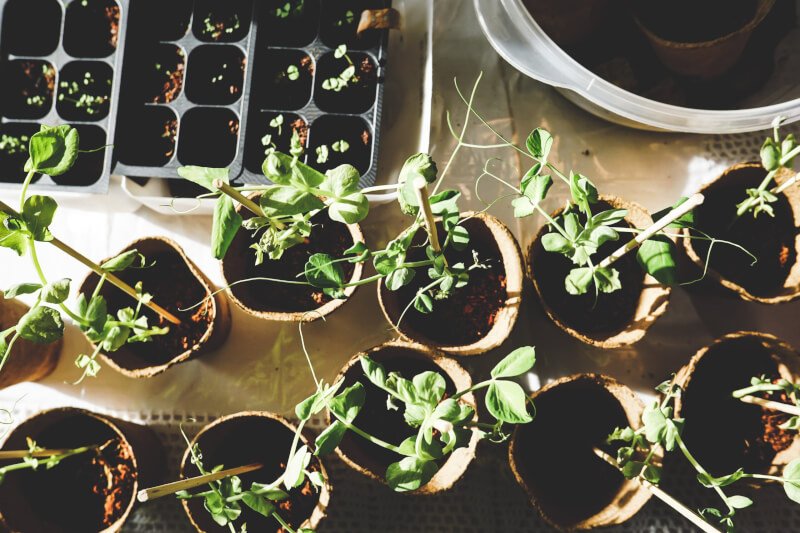
Maximizing Natural Light
Plants require adequate sunlight to thrive, so optimizing natural light in your small garden is crucial. Positioning your plants in areas of optimal sunlight, installing reflective surfaces, utilizing natural light sources, and incorporating grow lights can all help you make the most of limited sunlight.
Positioning Plants for Optimal Sunlight
To ensure your plants receive enough sunlight, it’s important to position them in areas that receive adequate light. Observe your garden throughout the day to identify spots that receive the most sunlight. South-facing locations generally receive the most intense sunlight, followed by west and east-facing areas. Adjust the placement of your containers accordingly to maximize sun exposure for your plants.
Installing Reflective Surfaces
Reflective surfaces can help redirect sunlight onto your plants, increasing the overall light they receive. Consider using materials such as white gravel or pebbles, aluminum foil, or reflective film to create surfaces that bounce light back onto your plants. Placing these surfaces strategically around your garden can make a noticeable difference, especially in areas with limited direct sunlight.
Utilizing Natural Light Sources in Limited Spaces
In small or indoor spaces where natural light may be limited, you can get creative by utilizing natural light sources. Placing mirrors or light-colored walls near your plants can help reflect and distribute light more effectively. Another option is to rearrange furniture or remove obstacles that may be blocking sunlight from reaching your plants. By optimizing the natural light available, you can ensure your plants receive the energy they need to grow and thrive.
Using Grow Lights
In situations where natural light is insufficient, incorporating artificial grow lights can be beneficial. LED grow lights are a popular choice as they are energy-efficient and emit the specific wavelengths of light that plants need for photosynthesis. Place the grow lights at an appropriate distance from your plants, following the manufacturer’s guidelines, to provide the correct amount of light and prevent heat damage. With the right setup, you can effectively supplement natural light and grow healthy plants even in spaces with limited exposure to sunlight.
Optimal Plant Spacing
Proper plant spacing is crucial for ensuring healthy growth and maximizing the use of limited space. Understanding plant spacing requirements, utilizing companion planting, practicing succession planting techniques, and implementing intercropping can help you make the most of your garden layout.
Understanding Plant Spacing Requirements
Each plant has specific spacing requirements to allow for proper airflow, sunlight, and root development. Always refer to the seed packet or plant label for recommended spacing guidelines. Ignoring these recommendations can lead to overcrowding, increased competition for resources, and a higher risk of disease. By adhering to the correct plant spacing, you can optimize the use of your limited space and promote healthier plants.
Utilizing Companion Planting
Companion planting is a technique that involves strategically planting different crops together to maximize space, deter pests, and enhance growth. For example, planting tall sunflowers alongside shorter vegetables can provide shade and support for the smaller plants. Additionally, certain plants have natural insect-repelling properties and can be used to protect neighboring plants from pests. Examples include marigolds, which deter nematodes, and basil, which repels mosquitoes and aphids.
Succession Planting Techniques
Succession planting involves staggering the planting of crops to ensure a continuous harvest throughout the growing season. This technique allows you to make the most of limited space by utilizing areas that would otherwise remain empty after an initial harvest. As soon as one crop is harvested, replant the area with a different crop that matures at a later date. By carefully planning and timing your succession plantings, you can enjoy a continuous supply of fresh produce from your small garden.
Utilizing Intercropping
Intercropping involves planting different crops in close proximity to maximize space and resources. By pairing plants with contrasting growth habits and nutrient requirements, you can optimize your garden’s potential. For example, growing shallow-rooted plants alongside deep-rooted ones allows for efficient use of the soil. Intercropping can also provide natural pest control by confusing pests and reducing their impact on your crops.
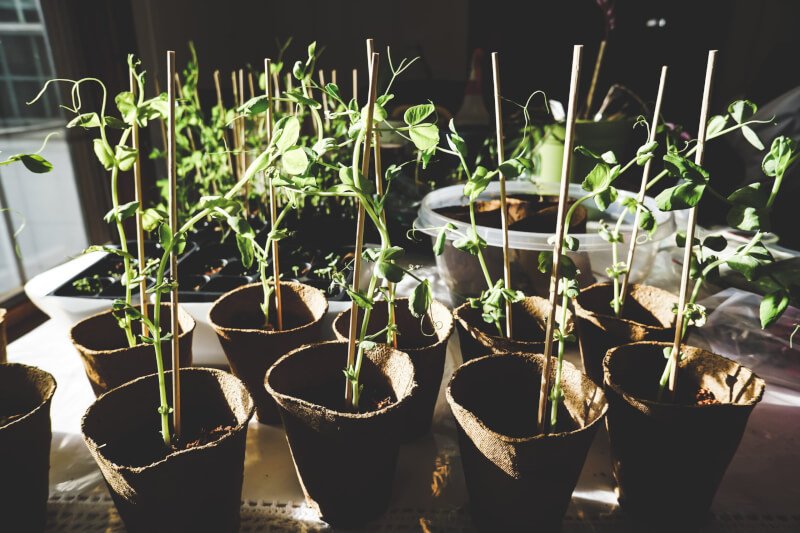
Vertical Gardening Techniques
Vertical gardening techniques offer an innovative approach to gardening in limited spaces. By creating trellises for climbing plants, utilizing A-frame structures, building wall-mounted planters, and exploring vertical hydroponic systems, you can take advantage of vertical space and create a stunning garden display.
Creating a Trellis for Climbing Plants
A trellis is a structure that supports climbing plants, allowing them to grow vertically instead of taking up valuable ground space. Constructing a trellis can be as simple as using wooden stakes and twine or purchasing ready-made trellis panels. As the plants grow, gently guide their vines or stems along the trellis to provide support. Trellises are excellent for growing vine crops like cucumbers, tomatoes, or beans, and can add height and visual interest to your garden.
Utilizing A-Frame Structures
A-frame structures are a great option for vertical gardening, particularly for larger climbing plants. These structures consist of two sloping sides that meet at the top, resembling an A-shape. You can easily construct an A-frame using sturdy materials such as wood or metal. Secure the structure in the ground or in containers and train your plants to climb up the sides. A-frames are ideal for growing sprawling crops like melons or winter squash, and they provide an architectural focal point in your garden.
Building Wall-Mounted Planters
Wall-mounted planters are a fantastic solution for utilizing vertical space, particularly in small outdoor areas or balconies. These planters can be attached to walls or fences, freeing up valuable floor space. You can purchase ready-made wall-mounted planters or build your own using materials like pallets or repurposed containers. Fill the planters with well-draining soil and choose plants that have shallow root systems. Wall-mounted planters add an aesthetic touch to your garden while maximizing space.
Vertical Hydroponic Systems
For those who want to take vertical gardening to the next level, vertical hydroponic systems offer an efficient and space-saving solution. Hydroponics is a method of growing plants without soil, using nutrient-rich water as a growing medium. Vertical systems consist of stacked or tiered trays where the plants are grown, allowing for high-density planting. These systems can be set up indoors or outdoors, and they offer precise control over nutrient levels, water usage, and light exposure. Vertical hydroponic systems are particularly well-suited for growing leafy greens, herbs, or strawberries.
Utilizing Small Spaces
When limited space is a challenge, don’t despair. There are various ways to make the most of small areas and still enjoy a flourishing garden. Window boxes and balcony gardens, growing in small raised beds, utilizing hanging vertical gardens, and creating windowsill herb gardens are all effective strategies for maximizing space.
Window Boxes and Balcony Gardens
Window boxes and balcony gardens are ideal for those with limited outdoor space. These compact containers can be placed on windowsills or hung on balcony railings, allowing you to grow a variety of plants right outside your window. Choose plants that thrive in containers, such as colorful annual flowers or compact herbs. Consider the amount of sunlight your window or balcony receives and select plants accordingly. Window boxes and balcony gardens add charm and greenery to your space, even in the smallest areas.
Growing in Small Raised Beds
If you have a small area of soil available, consider creating small raised beds. Raised beds are elevated planters that provide better drainage and soil control compared to traditional gardens. They also allow you to optimize space by concentrating plants in a defined area. Construct a raised bed using wood or recycled materials, ensuring it’s no wider than the reach of your arms. Fill it with a rich, well-draining soil mix, and plant a combination of vegetables, herbs, or flowers. Small raised beds make gardening more accessible and productive in limited spaces.
Utilizing Hanging Vertical Gardens
Hanging vertical gardens are a clever solution for small areas where floor space is at a premium. These gardens typically consist of suspended planters or pockets that can be mounted on walls or hung from ceilings. Fill the planters with a lightweight, well-draining soil mix and choose plants with shallow root systems. Hang the vertical garden in a location with adequate light and ensure easy access for watering and maintenance. Hanging vertical gardens are not only practical but also add a unique and eye-catching visual element to your space.
Windowsill Herb Gardens
One of the simplest and most convenient ways to utilize a small space is by creating a windowsill herb garden. All you need is a sunny windowsill and a few small containers filled with well-draining soil. Choose your favorite culinary herbs, such as basil, thyme, or parsley, and place the containers near a window that receives at least six hours of sunlight per day. Windowsill herb gardens provide easy access to fresh herbs for cooking, and their fragrant foliage adds a delightful touch to any kitchen.
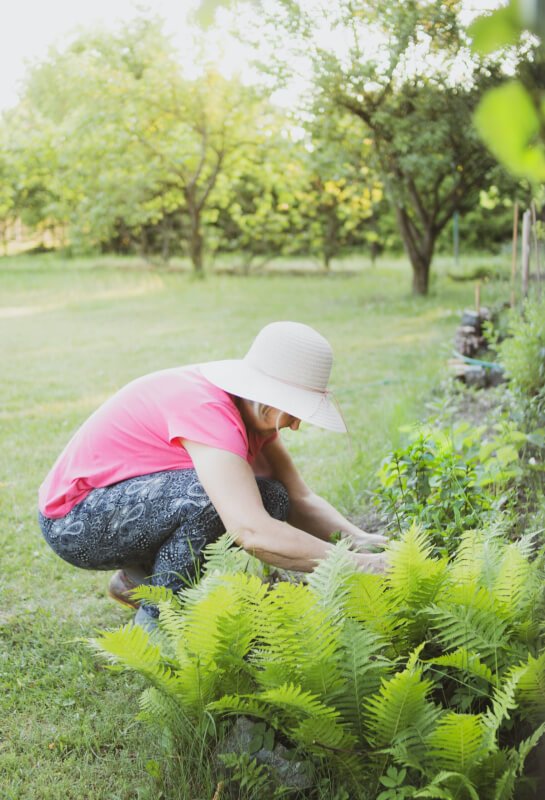
Soil and Fertilizer Considerations
Choosing the right soil and fertilizer is essential for successful container gardening. Selecting the right soil mix, utilizing compact fertilizer solutions, implementing organic soil amendments, and understanding container drainage are all key factors to consider.
Choosing the Right Soil Mix
When it comes to container gardening, using the right soil mix is crucial. Look for a high-quality potting mix specifically formulated for containers. These mixes are lightweight, well-draining, and provide the necessary nutrients for healthy plant growth. Avoid using garden soil as it can be too dense and may not drain well in containers. Additionally, consider adding perlite or vermiculite to the potting mix to improve drainage and aeration.
Utilizing Compact Fertilizer Solutions
Fertilizing container plants is essential to provide them with the nutrients they need for vigorous growth. In limited space gardens, compact fertilizer solutions such as granular slow-release fertilizers or water-soluble fertilizers are ideal. Slow-release fertilizers release nutrients gradually over an extended period, reducing the need for frequent applications. Water-soluble fertilizers can be dissolved in water and easily applied through watering. Choose a fertilizer with a balanced ratio of nutrients suited to the specific needs of your plants.
Implementing Organic Soil Amendments
Organic soil amendments can improve the nutrient content and structure of your soil, ensuring healthy plant growth. Composted organic matter, such as well-rotted manure or compost, can be mixed into your soil to supply nutrients and improve moisture retention. Additionally, worm castings or vermicompost provide valuable nutrients and help improve soil health. Organic soil amendments not only benefit your plants but also promote a more sustainable and environmentally friendly gardening approach.
Understanding Container Drainage
Proper drainage is essential for container gardening success. Most plants dislike sitting in waterlogged soil, which can lead to root rot and poor growth. To ensure adequate drainage, choose containers with drainage holes and place a layer of rocks or gravel at the bottom of the pot before adding the potting mix. This layer creates air space and allows excess water to escape. Additionally, consider using containers with self-watering features or incorporating drainage trays to prevent water accumulation. Good drainage is key to keeping your plants healthy and thriving.
Watering Techniques in Limited Spaces
Watering container plants in limited spaces requires careful consideration to avoid overwatering or underwatering. Implementing drip irrigation systems, utilizing self-watering containers, using moisture-retaining mulch, and monitoring and adjusting watering frequency are effective techniques for maintaining proper moisture levels.
Implementing Drip Irrigation Systems
Drip irrigation systems are an efficient and precise way to provide water to your plants. These systems deliver water directly to the root zone, minimizing water waste through evaporation or runoff. Drip irrigation can be set up using tubing, emitters, and a timer. The timer can be adjusted to provide water at specific intervals, ensuring consistent moisture for your plants. Drip irrigation is particularly beneficial in limited spaces as it allows you to water multiple containers simultaneously and frees up time for other gardening tasks.
Utilizing Self-Watering Containers
Self-watering containers are a convenient option for those with limited time or who may be prone to forgetting to water their plants. These containers have built-in reservoirs that hold water, ensuring a constant supply for the plants’ roots. As the soil dries out, it wicks up the water from the reservoir, preventing both overwatering and underwatering. Self-watering containers are available in various sizes and styles, making them suitable for different types of plants and garden aesthetics.
Using Moisture-Retaining Mulch
Mulching is an effective technique for conserving moisture in containers. Apply a layer of organic mulch, such as shredded leaves or straw, to the surface of the soil. Mulch acts as a protective barrier, reducing evaporation and regulating soil temperature. It also helps suppress weed growth, preventing competition for water and nutrients. By using moisture-retaining mulch, you can minimize water loss from your containers and reduce the frequency of watering.
Monitoring and Adjusting Watering Frequency
Regularly monitoring the moisture levels of your container plants is essential in limited space gardens. Stick your finger about an inch into the soil to determine if it feels dry or still moist. Adjust your watering frequency accordingly, ensuring that the soil doesn’t become waterlogged or completely dry out. As environmental conditions change, such as during hotter or cooler months, you may need to modify your watering schedule. By being observant and responsive to your plants’ needs, you can maintain optimal moisture levels and promote healthy growth.
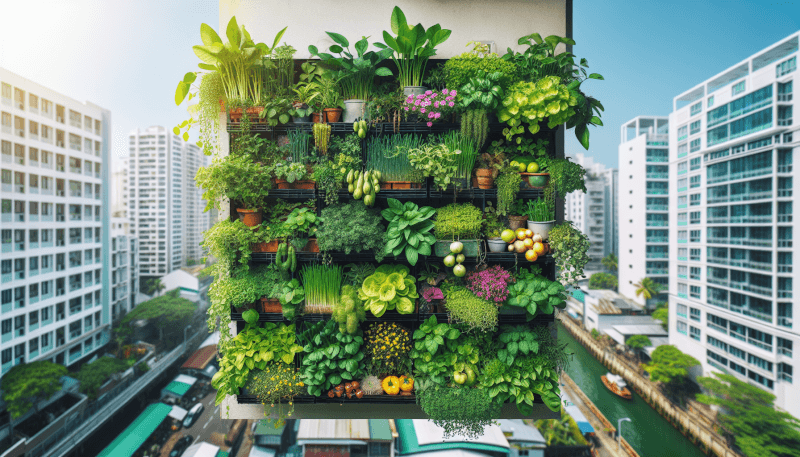
Effective Pest and Disease Management
Pest and disease management is essential in any garden, regardless of its size. Implementing integrated pest management, utilizing natural pest deterrents, regularly inspecting plants for signs of disease, and applying organic pest control methods can help you effectively manage pests and diseases in your limited space garden.
Implementing Integrated Pest Management
Integrated pest management (IPM) is an approach that focuses on preventing and managing pests using a combination of cultural, biological, and chemical control methods. Start by identifying the pests or diseases affecting your plants and research specific control measures for each. Cultural practices, such as removing diseased plant material or practicing good sanitation, are often the first line of defense. Biological controls, such as introducing beneficial insects or using nematodes, can help control pests without relying on chemicals. Chemical controls, such as organic insecticides, should be used as a last resort and applied according to label instructions. By implementing IPM, you can effectively manage pests and diseases while minimizing the impact on beneficial insects and the environment.
Utilizing Natural Pest Deterrents
Natural pest deterrents are a safe and environmentally friendly method of keeping pests at bay. Certain plants, such as marigolds, lavender, or garlic, emit natural compounds that repel insects. Consider planting these pest-deterring plants strategically throughout your garden. Additionally, using physical barriers like netting or floating row covers can prevent pests from reaching your plants. Regularly inspecting your plants for early signs of pest damage allows for early intervention and reduces the risk of widespread infestation.
Regularly Inspecting Plants for Signs of Disease
Regularly inspecting your plants for signs of disease is crucial for early detection and effective disease management. Look for symptoms such as wilting, yellowing leaves, spots, or abnormal growth. Remove any affected plant material promptly to prevent the spread of disease. Disinfecting your tools between plants and avoiding overhead watering can also reduce the risk of disease transmission. By being vigilant and proactive in monitoring your plants’ health, you can identify and address diseases before they cause significant damage.
Applying Organic Pest Control Methods
When chemical control is necessary, opt for organic pest control methods that are safe for you, your plants, and the environment. There are various organic insecticides available, such as neem oil or insecticidal soap, that effectively control pests without leaving harmful residues. However, it’s important to read and follow the instructions on the product labels to ensure proper application and minimize any unintended effects on beneficial insects. Additionally, consider the use of physical pest control methods, such as handpicking or using sticky traps, to manage pest populations in a targeted and environmentally friendly manner.
Harvesting and Storage Tips
The ultimate reward of gardening is harvesting your crops and enjoying the freshness of homegrown produce. Knowing when to harvest your crops at optimal times, properly washing and storing harvested produce, utilizing preservation techniques, and planning for year-round harvest can help you make the most of your garden’s bounty.
Harvesting Crops at Optimal Times
Each crop has specific indicators to determine the best time for harvesting. For vegetables, harvest when they have reached their anticipated size or color, usually indicated on the seed packet or plant label. Taste and texture also play a role, so sample a small piece before harvesting the whole crop. Herbs can be harvested as soon as they have sufficient foliage to spare. Harvesting in the morning, when the plants are hydrated but the sun is not yet intense, generally provides the best flavor and shelf life. By harvesting your crops at their peak, you will enjoy the freshest and most flavorful produce from your limited space garden.
Properly Washing and Storing Harvested Produce
Properly washing and storing harvested produce is crucial for maintaining its quality and extending its shelf life. Remove any visible dirt or debris by rinsing the produce under cool, running water. For leafy greens and delicate herbs, immerse them in a bowl of water and gently agitate to dislodge any dirt. After washing, thoroughly dry the produce before storing to prevent mold or premature spoilage. In terms of storage, some vegetables can be stored in the refrigerator, while others are best stored at room temperature. Research the specific storage requirements for each crop to ensure optimal freshness.
Utilizing Preservation Techniques
Preservation techniques, such as canning, freezing, or drying, allow you to enjoy your harvested produce beyond the growing season. Canning involves processing fruits or vegetables in jars to create airtight seals and extended shelf life. Freezing is a simple method that involves blanching or partially cooking vegetables and then freezing them in airtight containers. Drying herbs or fruits removes the moisture, preserving their flavor and texture. Explore different preservation techniques to make the most of your harvest and enjoy your homegrown produce throughout the year.
Planning for Year-Round Harvest
To make the most of limited space, consider planning for a year-round harvest by implementing crop rotation and succession planting. Crop rotation involves alternating plant families or types in the same area each growing season to reduce the risk of disease or nutrient depletion. Succession planting, as mentioned earlier, allows you to replant an area as soon as a crop is harvested, extending your growing season. By carefully selecting varieties with different maturity dates, you can enjoy a continuous supply of fresh produce even from a small garden. With proper planning and execution, your limited space garden can provide a year-round harvest of homegrown ingredients.
In conclusion, limited space should never be a hindrance to growing your own ingredients. By effectively utilizing vertical space, choosing the right plants, optimizing natural light, implementing proper spacing and watering techniques, and managing pests and diseases, you can create a thriving garden even in the smallest of spaces. With careful consideration of soil and fertilizer choices, as well as implementing effective harvesting, storage, and preservation techniques, you can enjoy a bountiful harvest from your own limited space garden. So, roll up your sleeves, get creative, and start gardening! The rewards are waiting for you just outside your doorstep.


